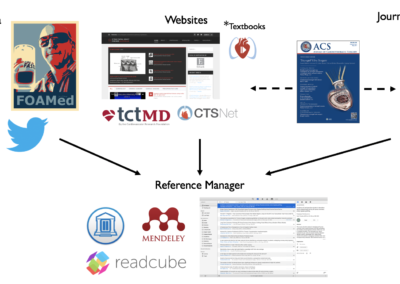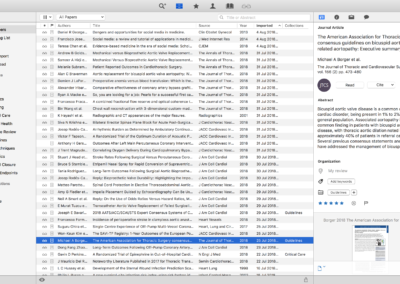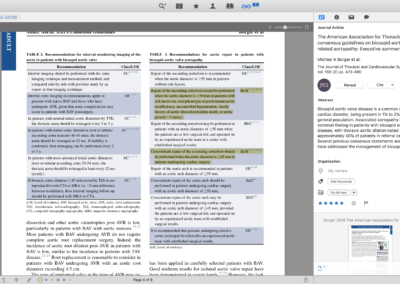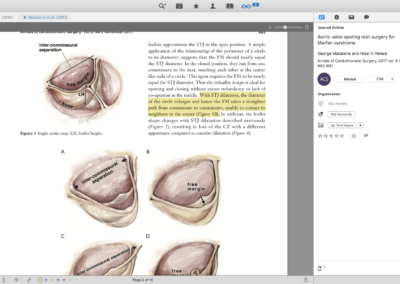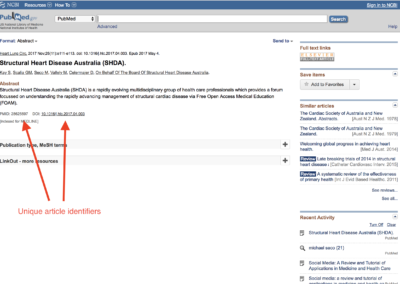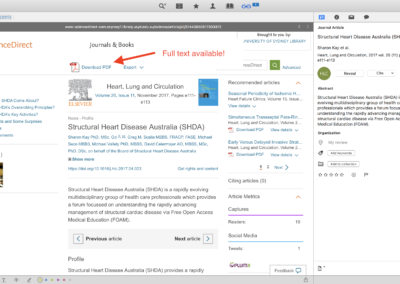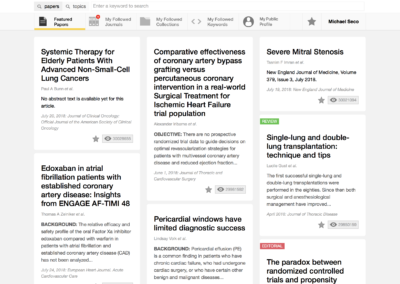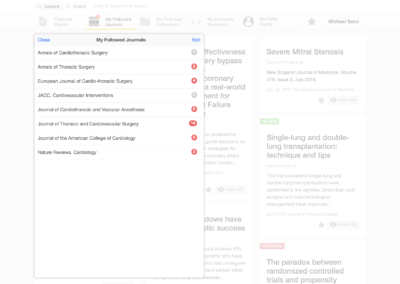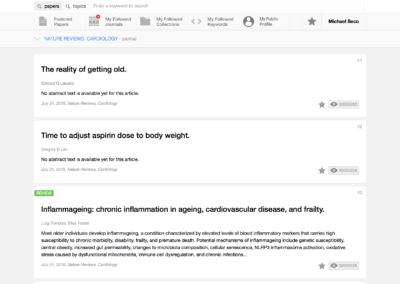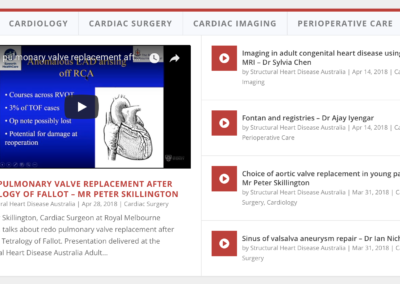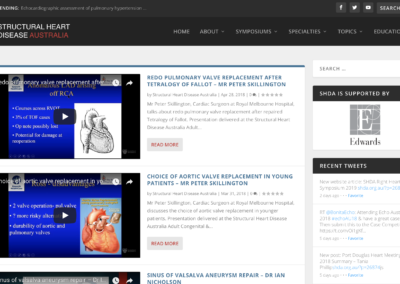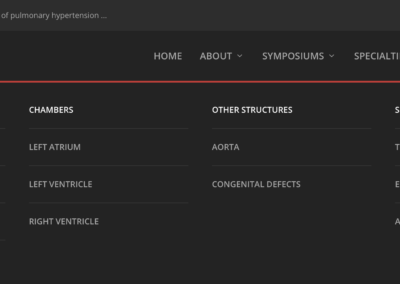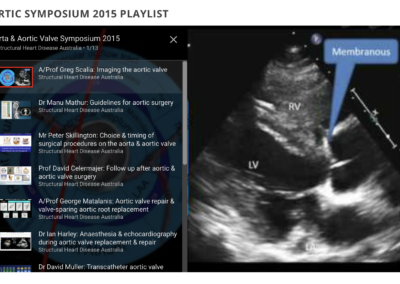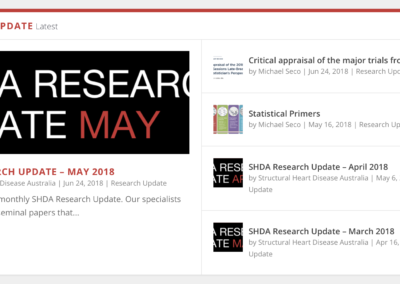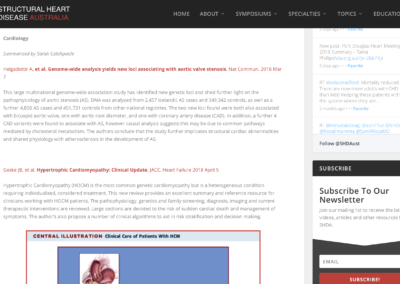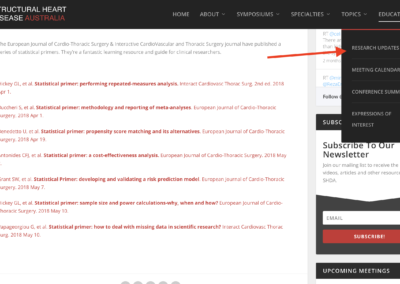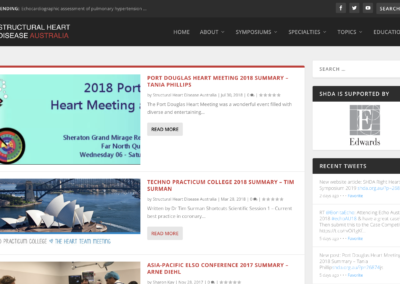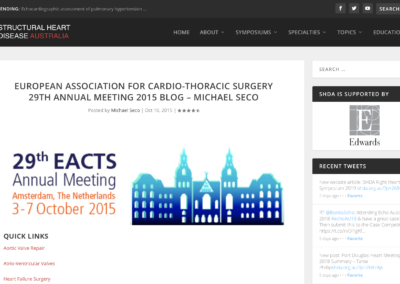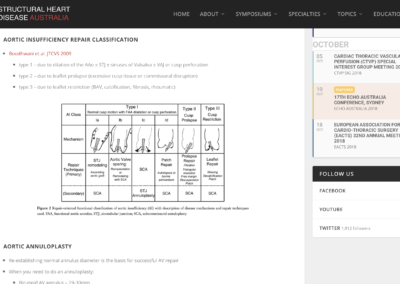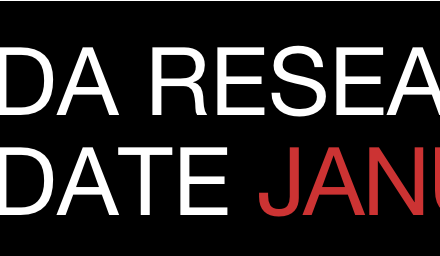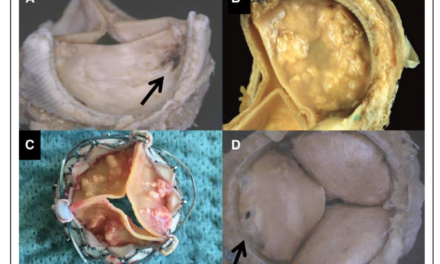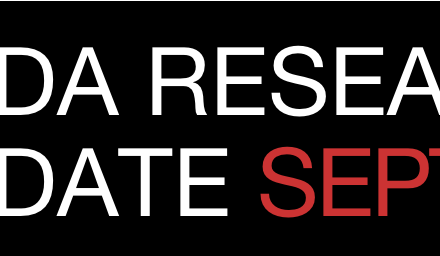Keeping up with the high volume of new research and information in structural heart disease can be difficult. Here are ways to use social media, journals and websites to stay on top of things.
Reference Managers
Reference managers help you keep research articles organised and easily accessible. Good managers also pull metadata (article title, authors etc) from Pubmed, access full-text pdfs through your university/institution’s proxy service, let you cite in word documents, and let you annotate/make notes as you read articles.
Journal Aggregators
Journal aggregators help by combining abstracts from multiple journals into one easy to read feed.
SHDA Website
SHDA posts all the videos from our symposiums online for you to watch free. You can browse these videos by:
- Specialty: Cardiology, Cardiac Surgery, Cardiac Imaging, Peri-operative Care/Anaesthetics
- Topics: Aortic Valve, Mitral Valve, Left Ventricle, Transcatheter (see the menu bar for the most popular)
- Symposium: visit the symposium pages to view a playlist of the lectures that were presented
- Search: search for any topic in the top right corner of the page
You can keep up to date when new resources are added by following us on twitter or subscribing to the email newsletter (sign up in the sidebar on the right).
SHDA Research Updates
SHDA publishes a research update each month with brief summaries of the 3 most important articles from each specialty of cardiac surgery, cardiology, cardiac imaging, and peri-operative care. They’re designed to give you the most important info in a short amount of time. Check them out here.
SHDA Conference Summaries
SHDA also sends junior doctors, nurses & technicians to attend conferences & write summaries of the most important presentations. That way you don’t miss out on the latest info. You can view them here.
Small scholarships are often available to help support people to attend these conferences. If you’re interested in this, applications are posted online when available here.
Other Useful SHD Websites
There are lots of online websites with useful articles, talks and videos related to the structural heart disease. Here are some of the most popular:
- Cardiac Surgery: Annals of Cardiothoracic Surgery, CTSNet, MMCTS
- Cardiology: Tctmd, heart-lung.org, Radcliffe Cardiology
- Cardiac Imaging: 3D Echo 360, ASE, CASE, Virtual TEE, The POCUS Atlas, Ultrasound Podcasts
- Critical Care/Anaesthetics: LITFL, ICN, St. Emlyn’s
Social Media
Some useful articles on social media in medicine & structural heart disease:
- Chan T, et al. Evidence-based medicine in the era of social media: Scholarly engagement through participation and online interaction. CJEM. 2018 Jan;20(1):3–8.
- Grajales FJ, et al. Social media: a review and tutorial of applications in medicine and health care. J Med Internet Res. 2014 Feb 11;16(2):e13.
- George DR, et al. Dangers and opportunities for social media in medicine. Clin Obstet Gynecol. 2013 Sep;56(3):453–62.
Follow some people & journals in SHD to get started!
- Structural Heart Disease Australia
- Cardiac Surgery: Arie Blitz, Pieter Kappetein, Husam Balkhy, Patrick Myers, Hiroo Takayama, AATS Journals, EACTS, SCTS UK, Women in Thoracic Surgery
- Cardiology: Gemma Figtree, Gregg Stone, Pascal Meier, Chris Semsarian, JACC, European Cardiology, JAMA Cardiology, Heart Lung Circulation,
- Cardiac Imaging: Stuart Grieve, Sharon Kay, Greg Scalia, ASE, JASE, echobasics
- Critical Care/Anaesthetics: Pete McCanny, Stephen Shepherd, Mike Cadogan, EACTA, ACTACC, ELSO, ED ECMO Project, learnECMO
Send Us Your Favourite Resources
If you know of or use any other resources that you find helpful please let us know by using the form below! We’ll update the page to include them or feature them on the website.




